The Economic & Geopolitical History of Eritrea
The West calls this place the "African North Korea"
“Yet twenty-five years into his party's rule, Isaias Afwerki is still the president of Eritrea. Elections were scheduled for 2001, but have yet to take place. It is no wonder that Eritrea is often nicknamed the “North Korea of Africa.”” —- Asma Saad
Eritrea, a highly militarized state, enforces prolonged mandatory conscription due to its history of prolonged conflict with fighting 30 years for independence from Ethiopia. After independence in 1993, Eritrea fought wars against Yemen, Ethiopia, and Djibouti.
Eritrea’s extensive, multi-decade, military draft drives many Eritreans to seek refuge abroad, resulting in approximately ~600K recent refugees and asylum seekers. With a population of 3.8M people, Eritrea is home to diverse tribes, including Tigrinya (also in Ethiopia), Tigre, Saho, Afar (also in Djibouti) and etc. Eritreans speak Tigrinya, Arabic and English as official languages.
The economy relies heavily on farming and mining, with limited exports, primarily natural resources sold to China, South Korea, and the UAE. The country is highly secretive, refusing to post its government budgets to the World Bank. We are only aware of Eritrea’s finances from the countries that give money to Eritrea. From 2000-2018, China has lent $631M to the country, from 1992-2019, America has provided $4.4B in total aid and low interest loans to Eritrea. Eritrea has also defaulted on a loan to Qatar, where now Eritrea owes $290M to the Qatari National Bank. The economy has no stock market and there are numerous government owned enterprises. As of 2021, Eritrea's total exports still have not reached $1B, positioning it as a minor player in the global, $21T market.
Eritrea also doesn’t make enough food and it has poor agricultural productivity. Eritrea’s second largest import category is food.

Eritrea’s economy has unfortunately been stagnant. Adjusted for inflation, living standards have barely budged since independence.

Eritrea shares significant early history with Ethiopia. Like Ethiopia, Eritrea was part of the Damot and Aksum Kingdom. During the Aksumite era, Aksum Kingdom traded with Greeks, who referred to the Red Sea as 'Erythra Thalassa.' Eritrea takes its name from this Greek term when Italy colonized it. To learn more about those Kingdoms, read here in Ethiopia.
Ethiopia - Part 1, Ancient Times & Avoiding Colonialism
Ethiopia, Africa's second most populous nation with 115 million inhabitants, is characterized by a diverse tapestry of ethnicities. Predominantly, there are the Oromo in the South, Amharic in the North West, Tigray in the far North West, the Afar in the North East, Somalis in the East, alongside various other ethnic groups. Resisting colonization, Ethi…
Pre-Colonial Eritrea
However, the divergence between Ethiopia and Eritrea starts in the Middle ages. Eritrea became a semi-autonomous Kingdom of Ethiopia called Medri Bahri “Land of the Sea”, because it borders the Red Sea. The Kingdom was weak and has been fought over and conquered between the Somalis of the Adal Sultanate and the Ethiopians. Ethiopia received funding from Portugal and the Adal Sultanate of Somalia received funding from Ottoman Turkey.
Turkish Eritrea or Habesha Eyalet (1557-1869)
By 1557, Ottoman Turkey conquered Medri Bahri and became a Turkish Eyalet (basically a self ruled colony). The Turks also conquered Egypt and Sudan. Medri Bahri was converted to Islam and became known as the Habesh Eyalet. Turkey had a semi-autonomous province, Muhammed Ali’s Egypt, which held jurisdiction over Habesha Eyalet after 1865.
Turkish-Egyptian Eritrea or Habesha Eyalet (1865-1869)
Ethiopia has fought many wars against Turkish Egypt on Eritrean soil, to reconquer Eritrea to regain access to the Red Sea, but by the 19th century, the Italian Rubattino Navigation Company bought Habesh Eyalet. Then Italy took the land from the company. Ethiopia wanted Habesh Eyalet too, but Ethiopia recognized Italy’s conquest of Habesh Eyalet. Italy renamed Habesh Eyalet to Eritrea in 1869. Italy tried to conquer Ethiopia with Italian & Eritrean soldiers, but failed in the Battle of Adwa.

Italian Eritrea (1882-1941)
By 1882, The Rubattino Shipping Company sold Eritrea to The Kingdom of Italy, formally establishing the colony of Eritrea.
Italy established an apartheid system in Eritrea, segregating whites and blacks and limiting Eritrean education to fourth grade. The Italians controlled prime agricultural land and restricted Eritreans from modern faming methods. Italy made the Eritrean Railway and made the Asmara-Massawa Cableway, with Eritreans were nearly worked to death to build the infrastructure. Additionally, the Italians invested heavily in the farming sector, and employed Eritreans in the public sector like police, the army, and public works.

Italy used Eritreans to crush Turkish rule in Libya. Also, Italy used Eritreans as cheap labor to make buttons, cooking oil, pasta, construction materials, meat, and tobacco. Eventually, Italy allowed some loyal Eritreans to own their own factory, although they were taxed heavily.
When Fascist Mussolini came to power, he invaded and conquered Ethiopia, and emerged Ethiopia, Eritrea, and Somalia into Italian East Africa.
British Eritrea (1941-1952)
WW2 led to British control of Eritrea. Eritrea was on British trusteeship until Eritrea was “ready for self-determination”. However, Eritrea was deeply divided. Generally speaking, the Muslim Eritreans wanted independence, while the Christian Eritreans had affinities to the Ethiopian Orthodox Church and wanted to unite with Ethiopia. Emperor Halie Selassie of Ethiopia decided to exploit this division and finally get coastal access to the sea.
Post War, Emperor Halie Selassie of Ethiopia asked the allied powers (America, U.K. & France) to annex French Somalia (Djibouti), British Somalia(Somaliland), Italian Somalia (Somalia), & Eritrea. The allies said no to Somalia but yes to Eritrea, on the condition that America can have a military base in Eritrea. So the allies allowed the newly formed UN to permit Ethiopia to make a federation with Eritrea in 1952.
Ethiopian Eritrea (1952-1993)
Eritrea was supposed to be autonomous, and Ethiopia was only supposed to manage foreign affairs for Eritrea. Instead, Selassie slowly removed Eritrea’s autonomy. From the Eritrean perspective, they have became second class citizens to a poor Monarchial country.
Eritreans hated this arrangement, half of Eritreans were Muslim and hated Selassie’s preference for the Ethiopian Orthodox Christian Church. Muslim Eritreans formed the Eritrean Liberation Front or “Jebha” to secede from Ethiopia. Eritrea asked for military support & aid from Arab states like Egypt, Sudan, and Syria and received military training from Chairman Mao’s China to help with secession.
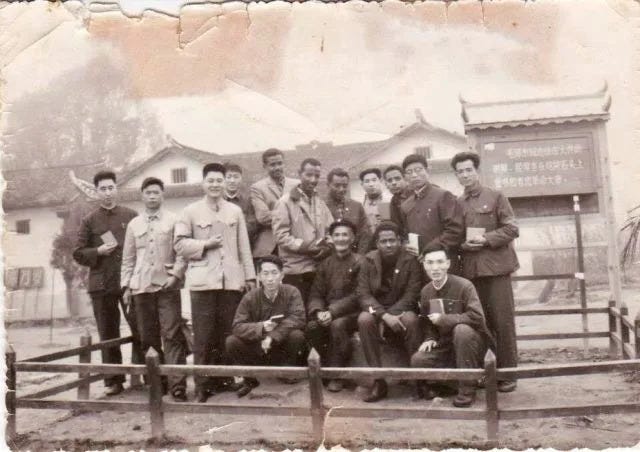
In 1961, the movement became the Eritrean People’s Liberation Front and resisted Ethiopian Monarchist rule.
At this point, Emperor Selassie gave up all pretenses of a Federation with Eritrea and decided to wholesale annex Eritrea by 1962.
By 1973, a group of communist Eritreans thought that the Islamic & Arabphile parts of Jebha were too narrow minded. The communist Eritreans, led by Isaias Afwerki, broke of with Jebha and formed the Eritrean People’s Liberation Front or “Shabia”.
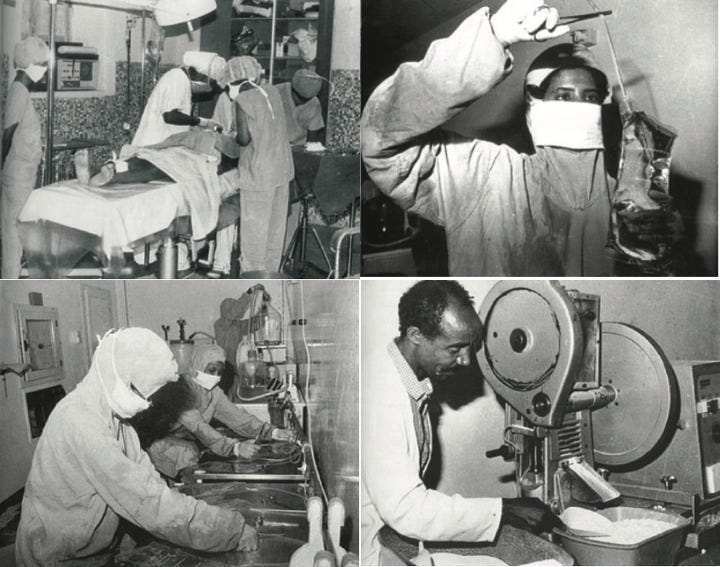
In 1974, Ethiopia was overrun by the communist Derg military regime. The communists became increasingly unpopular, as more ethnic groups rebelled against Ethiopia. Meanwhile, Shabia fought a civil war with Muslim Jebha while fighting Ethiopia, and the Communist Shabia came out on top as the main representative rebel movement for the Eritreans.
After Communism in Ethiopia fell in 1991, Ethiopia made a new constitution which allowed provinces to secede. Eritreans overwhelmingly voted for independence. By 1993, Eritrea was a new sovereign country under a one party autocratic ruler.
To learn more see my part two article on Ethiopia:
Ethiopia Part 2: Monarchy to Communism to Democracy (1916-2000)
Last time we discussed Ethiopia's evolution from the Aksumite state to a diverse empire that resisted European colonization. Italy claimed Libya, Somalia, and Eritrea but failed to capture Ethiopia. Emperor Menelik expanded Ethiopia and its borders were established in 1904. For part one, click here:
Independent Eritrea (1993-Present)

Eritrea has only had one President, Isaias Afwerki. There has not been one election since independence. He his the Eritrean People’s Liberation Front into the People’s Front for Democracy and Justice, the sole legal political party in Eritrea.
The Good:
In the 90s and early 2000s, Isaias built hospitals, planted trees and made sure food aid was effectively distributed. Bill Clinton hailed him as a “leader of African Renaissance”. The UN praised Eritrea for being on target to hit UN Millennium Development goals.
Improved Health and Literacy: Life expectancy increased from 50 years(1990) to 67 years (2023) and literacy has increased to over 77% of the population.
Foreign relations: He has established good relationships with United Arab Emirates (UAE) and Saudi Arabia. Eritrea allows UAE and Saudi Arabia to have military bases on Eritrea (which they used in their fight against Libya & Yemen in their civil wars), and in turn, the gulf states provide Eritrea money and fuel.
The Bad:
Eritrea kept getting into wars after independence, leading to an increasingly militarized society. The government created a conscription program into national service for an indefinite period of time. The UN calls this conscription program tantamount to “slavery”. Many Eritreans did not want to be permanently drafted into the military leading to a massive number of Eritreans fleeing the country to seek asylum in Israel, Sudan, Ethiopia, Yemen, or Egypt.
Eritrean-Yemeni Border conflict (1995):
Eritrea lost the Hanish islands, but Eritrea got some of the smaller surrounding islands.
Eritrean-Ethiopian relations and conflict (1998-2000):
Eritrea and Ethiopia were initially on good terms post independence. The post-Communist leader of Ethiopia, Meles Zenawi, and Isaias used to live together in Somalia when they were plotting to destroy Communism in Derg Ethiopia.
After they led their respective countries after Communism ended in Ethiopia, they worked together to try to stabilize Somalia after Siad Barre was removed. In addition, Ethiopia had access to Eritrean ports.
But everything changed in 1996, when a plane Isaias entered caught fire. He thought Meles was trying to kill him. By 1997, Eritrea removed Ethiopia’s access to its ports.
By 1998, the United Nations awarded Badme to Eritrea, but Meles would not relinquish the town. Ethiopia and Eritrea had a border war over the village Badme (1998-2000), which took 70K lives. Much of the infrastructure that Italians built was obliterated. The border conflict was not resolved until 2018. Since then, Afwerki has severely disliked Ethiopian Tigrayans since Ethiopia’s Tigray region borders Eritrea. After this war in 2003, he started his conscription program. This program is criticized for his human rights abuses; however, it is utilized to employ young people who can’t find jobs after finishing university.
Eritrean-Djibouti Border conflict (2008):
Eritrea attacked Djibouti because he disagreed on borders. The International Community, the UN, did not like this.
His nation used to be sanctioned by the UN: In 2009, the United Nations put economic sanctions on Eritrea for supporting arming, training, and equipping the Somali terrorist organization — Al-Shabaab. Al-Shabab was trying to destroy and destabilize the country Djibouti. The sanction entails an arms embargo on the nation. The political and military leadership are subjected to travel restrictions and asset freezes. Eritrea denied supporting Al-Shabaab.
Eritrea was internationally isolated, and Eritrea left the East African trade bloc after sanctions.
By 2018, the UN lifted sanctions on Eritrea for making peace with Ethiopia. But America has imposed sanctions on his army and ruling party. America is now trying to get the UN to reimpose an arms embargo on his regime.
The President of Ethiopia, Abiy believed that signing peace with Eritrea would lead to Ethiopia having secure port access to Eritrea’s port city, Assab. That has not happened yet, which upsets Ethiopia, a landlocked nation.
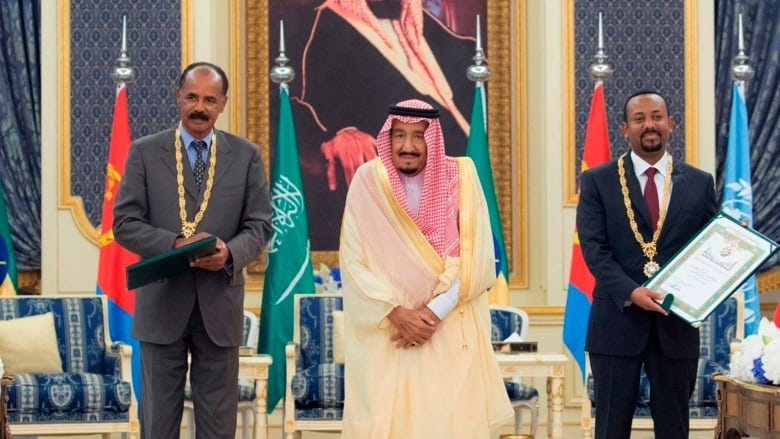
Eritrea sent in troops to join Ethiopia in their crisis in the Tigray region. Isaias believes that the Tigray in Ethiopia want to overthrow his regime.
Ethiopia is now threatening to Eritrea and other neighbors for port access. Eritrea, with its highly militarized state, might need to go to war again.
Conclusion
Eritrea is a 30 year old country (as of 2023) that used to be part of Ethiopia. However, Turkish and then Italian control separated Eritrea from Ethiopia for some time. Even during Ethiopian rule, Eritrea wanted to leave. Now Eritrea is ruled by a leader who has been branded as “Africa’s Kim Jong Un”.
Despite Eritrea’s challenges, huge swaths of the Eritrea population loves him. As people still see him as the leader who brought them independence from Ethiopia.





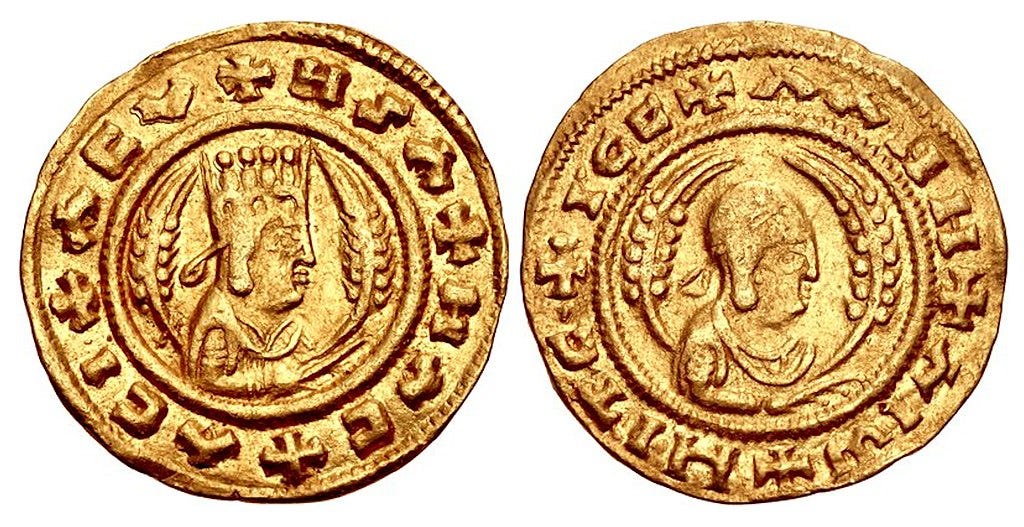


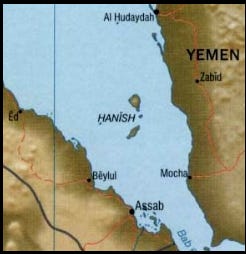
Relevant book "I Didn't Do It For You: How the World Used and Abused a Small African Nation" by Michaela Wong (https://www.goodreads.com/en/book/show/653992) I read a few years ago that went into detail about Eritrea's modern history. Definitely led me to having a great interest in the continuing geopolitics of both Ethiopia and Eritrea